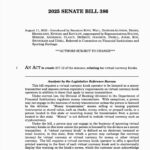Interoperability: The Key Focus for Ethereum Development
Researchers from the Ethereum Foundation have identified interoperability as the primary near-term priority for the development of Ethereum.
In a blog post published on Friday, the researchers stated, “we see interoperability, and related projects presented in this note, as the highest leverage opportunity” in the realm of user experience over the next six to twelve months. The short-term strategy emphasizes intent-based architecture alongside general message-passing.
In essence, the goal is to enable users to articulate desired outcomes (or “intents”), allowing the network to manage the low-level transactions, and to enhance the crosschain “pipes” (message-passing infrastructure) so that these intents can be seamlessly executed across layer-1 and rollups. The Ethereum Foundation is committed to optimizing for specific metrics that include time-to-inclusion, confirmation/finality, layer-2 settlement, and signatures per operation.
The researchers highlighted the need for interoperability due to the Ethereum ecosystem being segmented into multiple layer-2 protocols that enhance its functionality and scalability while also presenting “their own challenges, chief among them the pressures of fragmentation.” The blog post mentions a significant challenge:
Developers at the Ethereum Foundation have opted to categorize their interoperability efforts into three distinct streams: initialization, acceleration, and finalization. The initial stream concentrates on intent-based architecture and includes three key projects: the open intents framework, the Ethereum interoperability layer, and interoperability standards.
The open intents framework offers a modular, lightweight intent-based stack that simplifies the application of intents in Ethereum development. Production smart contracts are already operational, with audits expected to be completed in the third quarter of this year and crosschain validation anticipated in the fourth quarter.
The Ethereum interoperability layer serves as a trustless cross-L2 “transport” for prescriptive execution across various layer-2 protocols, developed by the Ethereum Request for Comments (ERC)-4337 team. ERC-4337 provides Ethereum’s account abstraction standard, enhancing smart contract wallets.
The final component of this development stream is interoperability standards, which are responsible for ensuring a consistent crosschain user experience.
- ERC-7828/7930 defines interoperable addresses,
- ERC-7811 standardizes asset consolidation so that identical tokens across chains and wrappers can be recognized as a single balance,
- ERC-5792 formalizes multi-call flows,
- ERC-7683 specifies a common intent format, and
- ERC-7786 offers a neutral messaging interface, facilitating interchangeability between bridges and verification backends.
The second stream is geared towards enhancing speed at every layer, while the third stream is dedicated to refining the final touches. This last stream is currently investigating solutions to bolster zero-knowledge proof support and enhance layer-1 finality times.



















